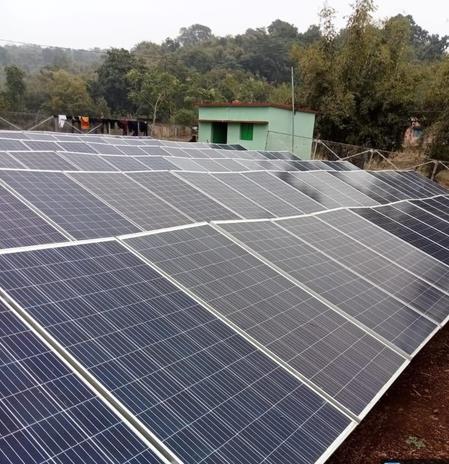
Pakistan's Power Sector Faces Crisis As Consumers Shift To Rooftop Solar Units
The government buys power from power plants and sells it to consumers, using revenues to pay back creditors such as China. But it's long been doing so at a loss, and collections are now starting to decline as families and businesses increasingly generate their own clean power, according to a Bloomberg report.
The International Monetary Fund has also asked the Pakistan government to retain power customers to ensure the viability of the energy sector.
Lawmakers are now turning to unpopular reforms to stem that tide. Purchases of panels are now subject to import tariffs, the absence of which let their spread go unnoticed for months. The initial proposal involved an 18 per cent tax, which was about halved after public backlash, the report states.
Both panel and battery imports from China are on the rise. Pakistan imported $1.5 billion worth of panels this year, becoming the third-biggest importer globally, according to Bloomberg NEF. The analysts also estimate the country has 25 gigawatts of solar panels, installed without government support, a significant boost to its grid's modest 50 gigawatts capacity.
The Government wants to increase utilisation of coal power plants or retire and repurpose them. The nation signed its largest-ever restructuring this month, including opening new loans with 18 banks worth a total 1.2 trillion rupees ($4.2 billion) in power sector debt, the report said.
Muhammad Ali, a member of the PM's taskforce on the energy sector and the country's privatisation minister said in an interview:“Unless we revise our solar policy, this defection from the grid will continue. That will further pressure Pakistan's energy system that's already dealing with a glut and the government must help create new demand.”
The China-Pakistan Economic Corridor (CPEC) which Islamabad had envisaged as an economic game-changer is actually turning out to be a costly venture as it has failed to achieve its targets and instead landed Pakistan in a $9.5 billion debt trap. The increase in the debt of the power sector has only added to this massive default on repayment of loans.
The initiative promised to give much-needed economic impetus to Pakistan but quickly entered uncharted waters and became mired in countless controversies. Thus, CPEC has very few outcomes to showcase. This delay has cost Pakistan dearly. The overdue energy and infrastructure projects, cost overruns, and accusations of opaque contracts have cost the initiative its viability.
Currently, Pakistan owes more than $7.5 billion for setting up power plants and additional nearly $2 billion to Chinese energy producers in circular debt, or unpaid bills.
Due to the delay in CPEC 2.0, Pakistan has been unable to establish the industrial base needed to transform into an export-driven economy and pay off its debts. Consequently, Pakistan had to seek more loans to pay past loans – resulting in a prolonged debt crisis.

Legal Disclaimer:
MENAFN provides the
information “as is” without warranty of any kind. We do not accept
any responsibility or liability for the accuracy, content, images,
videos, licenses, completeness, legality, or reliability of the information
contained in this article. If you have any complaints or copyright
issues related to this article, kindly contact the provider above.
Most popular stories
Market Research

- New Cryptocurrency Mutuum Finance (MUTM) Raises $15.8M As Phase 6 Reaches 40%
- Noveba Brings Apple Pay To Customers
- Mutuum Finance (MUTM) Approaches Next Phase With 14.3% Price Increase After Raising $16 Million
- Cregis And Kucoin Host Institutional Web3 Forum Discussing Industry Trends And Opportunities
- Primexbt Expands Crypto Futures With 101 New Coins, Delivering Best-In-Class Trading Conditions
- BTCC Exchange Announces Triple Global Workforce Expansion At TOKEN2049 Singapore To Power Web3 Evolution




















Comments
No comment